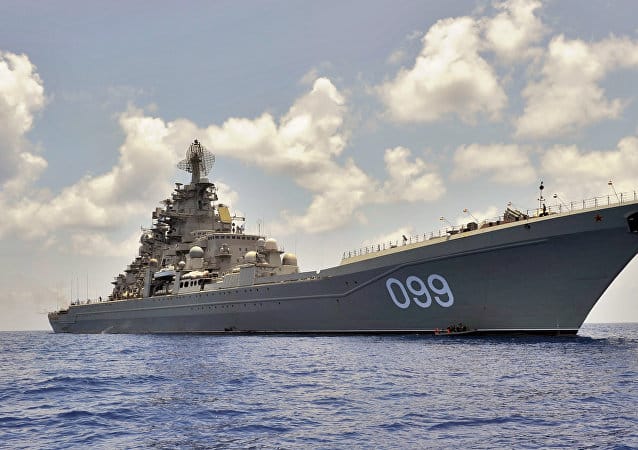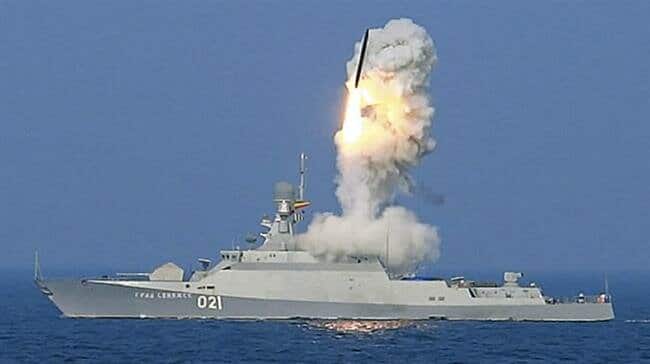Since the entry into service of the first Project 22350 frigate, Admiral Gorshkov, the announcements follow one another to increase the number. Initially planned for only 4 units, the class has continued to be extended, first in April 2019 by the construction of 2 additional units, this time equipped not with 16 but with 24 UkSK silos that can accommodate long missiles such as the P-800 Onyx, the 3M22 Tzirkon hypersonic, and the 9M54 Kalibr cruise missile, while retaining the 32 silos for the anti-aircraft missiles of the Poliment-Redut system. A few months later, in September 2019, the Ministry of Defense announced the start of construction, in 2020, of two additional units of the same type, which should enter service in 2026.
This time, it was the Deputy Minister of Defense, Alexei Krivoruchko, traveling to the Severnaya shipyards in Saint-Petersburg, who announced that new orders for ships of this class will be announced shortly, without specifying the number or the calendar. This announcement was made on the occasion of the keel laying ceremony, traditionally marking the start of construction of a ship, of a new corvette of Project 20380, a second class full of promise for the navy Russian.

Is this related to the upcoming entry into service of the hypersonic missile 3M22 Tzirkon, which recently carried out its first launch from a frigate ? Or the rediscovered efficiency of Russian shipyards who manage to build efficient naval units again within consistent deadlines?
Be that as it may, after decades of lean cows, the Russian high seas surface fleet once again appears to be benefiting from a policy of voluntary investment, possibly exceeding the Admiralty's expectations. Because beyond the 22350 Admiral Gorshkov frigates, which should therefore reach at least 10 units, and the corvettes 20380/20385 and 20386, which should reach or exceed 15 copies (13 confirmed to date), President Putin also announced the start of construction of at least 8 22350M heavy frigates between 2020 and 2027, and from 2 assault helicopter carriers, long awaited by Russian admirals since the cancellation of the delivery of the two French mistrals.
With a large number of frigates and heavy frigates, since they should exceed 18 units, supported by corvettes with proven offshore capabilities and also capable of deploying 8 heavy missiles such as the Kalibr or the Tzirkon, the Russian fleet will be able to ensure a smooth transition by withdrawing units inherited from Soviet times, such as 4 Sovremeniye destroyers and 9 Udaloy anti-submarine destroyers still in service. By proceeding in this way, it will be able, if necessary, to reduce the number of heavy destroyers of the Lider class, the construction of which is planned from 2025, to the sole replacement of the cruisers Slava (3 units) and Kirov (2 units), and thus reach a format higher than that of other European countries, even those, like France, the United Kingdom and Germany, with a significantly higher GDP.

In addition to the upcoming entry into service of the Tzirkon, and the rediscovered performance of Russian shipyards, a third parameter may explain the emphasis placed on ocean-going vessels today. Indeed, until recently, Moscow gave priority to building a dense fleet of coastal corvettes and armed patrol boats, sometimes qualified with a slight sarcasm of "Mosquito force". However, these ships, like the Buyan-M patrol boats, carried 3M54 Kalibr cruise missiles, while they were deployed in the Baltic and Black Seas, bringing a large part of European territory within reach. For Moscow, it was a question of circumventing the restrictions of the INF treaty which prohibited the use of ballistic or cruise missiles with a range of 500 to 2500 km implemented by land launchers. We also note that the Kh47M2 Kinzhal airborne hypersonic ballistic missile follows the same logic, since its range is 2000 km.
With the end of the INF treaty, recourse to such a fleet has become less necessary, and the Russian Defense Ministry has, in fact, been able to switch part of its production resources to high seas units, especially as recent news has shown Moscow that even with an essentially continental strategy, recourse to a powerful and dissuasive fleet is necessary to assert the decisions of the Kremlin in matters of international politics. In addition, it will make it possible to extend the defensive radius around the Russian dimensions, again by relying on the threat that the Tzirkon represents vis-à-vis potential adversaries.

Finally, and probably in a decisive way, the Russian fleet has, for the first time, the capacity to compete with NATO on the seas, because the vast majority of the US fleet will gradually switch to the Pacific theater to contain the Chinese naval power. In fact, even if the Kremlin is aware that it will be impossible for it to equal European naval power on a numerical level, it is probably betting to be able to gain the ascendancy over it by accumulating its fleet. surface, its submarine fleet and its long-range air force, with for example the modernization of the Tu-22M3M Backfire.
One thing is certain, with these repeated announcements in favor of modernizing and extending the capabilities of the Russian fleet, Moscow wants to position itself as a naval power, revealing a notable change in strategy since the end of the Soviet Union. . Will Westerners be ready to take on this challenge? Only the future will tell us ….

